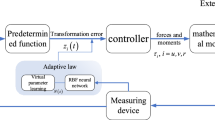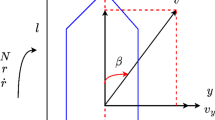Abstract
Ship berthing is a complicated manoeuvring process that demands precise control of the speed and course of an under-actuated system. As berthing involves low speed running of a ship under environmental disturbances with reduced manoeuvrability, a professional ship handler often faces difficulties in controlling heading in such a situation. To bring automation in ship berthing, most of the researchers have agreed that Artificial Neural Network (ANN) plays a vital role as it has the ability to learn from human experience and replicate similar action in an unknown situation. However, we are still far away from implementing it for real berthing control as we do not have any self-fulfilling ANN controller yet, which can treat all the major issues relevant to a complicated ship berthing operation. Based on contemporary research findings, this paper, therefore, highlights four major challenges that have to be taken into account while proposing an ANN controller for ship berthing, and a comprehensive summary of how to deal with those. The first is how to provide consistent teaching data while training ANN controller to make it more robust; second is how to make the controller universal to do berthing in any port; third is how to tackle the wind disturbances while automation in progress; and the fourth is how to align a ship to the pier, which is the final stage of berthing.









































Similar content being viewed by others
References
L. Shijie et al., Automatic docking for underactuated ships based on multi-objective nonlinear model predictive control. IEEE Open Access J. 8, 70044–70057 (2020)
Y. Shuai et al., An efficient Neural-Network based approach to automatic ship docking. Ocean Eng. 191, 19–22 (2019)
P.H. Nguyen, Y.C. Jung, Automatic Berthing Control of Ship using Adaptive Neural Network. J. Navig Port Res 31(7), 563–568 (2007)
Y. Liu, The Nonlinear Adaptive Control for Under actuated Surface Vessels. Ph.D. thesis. Dalian Maritime University, Dalian, (2010)
Y.D. Song et al., Tracking control for A Class of unknown nonsquare MIMO nonaffine systems: a deep-rooted information based robust adaptive approach. IEEE Trans. Autom. Control 61(10), 3227–3233 (2015)
H. Yamato et al., Automatic berthing by neural controller. Proceeding of the Ninth Ship Control Systems Symposium, vol. 3, pp. 183-201. Bethesda, (1990)
K. Hasegawa, K. Kitera, Automatic berthing control system using network and knowledge-base. J. Kansai Soc. Naval Archit. Jpn. 220, 135–143 (1993). (in Japanese)
N.K. Im, K. Hasegawa, a study on automatic ship berthing using parallel neural controller. J. Kansai Soc. Naval Archit. Jpn. 236, 65–70 (2001)
N.K. Im, K. Hasegawa, A study on automatic ship berthing using parallel neural controller (2nd Report). J. Kansai Soc. Naval Archit. Jpn. 237, 127–132 (2002)
N.K. Im et al., An application of ANN to automatic ship berthing using selective controller. J. Mar. Navig. Saf. Sea Trans. 1, 101–105 (2007)
N. Mizuno et al., Minimum time ship maneuvering method using neural network and nonlinear model predictive compensator. J. Control Eng. Pract. 15(6), 757–765 (2007)
G. Xu, K. Hasegawa, Automatic berthing using artificial neural network on teaching data generated by optimal steering. Jpn. Soc. Naval Archit. Ocean Eng. 14(2), 295–298 (2012)
Y.A. Ahmed and K. Hasegawa, Automatic ship berthing using artificial neural network based on virtual window concept in wind condition. Proceeding of the 13th IFAC Symposium on Control in Transportation Systems, pp. 359–364. (Sofia, Bulgaria, 2012)
Y.A. Ahmed, K. Hasegawa, Automatic ship berthing using artificial neural network trained by consistent teaching data using nonlinear programming method. J. Eng. Appl. Artif. Intell. 26(10), 2287–2304 (2013)
Y.A. Ahmed, K. Hasegawa, Consistently trained artificial neural network for automatic ship berthing control. TransNav Int. J. Mar. Navig. Saf. Sea Trans. 9(3), 417–426 (2015)
N.K. Im, V.S. Nguyen, Artificial Neural Network controller for automatic ship berthing using head-up coordinate system. Int. J. Naval Archit. Ocean Eng. 10, 235–249 (2018)
V.S. Nguyen et al., Development of automatic ship berthing system using artificial neural network and distance measurement system. Int. J. Fuzzy Logic Intell. Syst. 18, 41–49 (2018)
V.S. Nguyen, Investigation of a multitasking system for automatic ship berthing based on an integrated neural controller. Mathematics. 8, 1167 (2020)
D. Lee et al., Application of recent developments in deep learning to ANN-based automatic berthing systems. Int. J. Eng. Technol. Innov. 10(1), 75–90 (2020)
V.P. Bui et al., Modelling and Control Allocation for Ship Berthing System Design, International Conference on Control, Automation and Systems, pp. 195–200, (2010)
N.K. Im, A study on ship automatic berthing with assistance of auxiliary devices. Int. J. Naval Archit. Ocean Eng. 4(3), 199–210 (2012)
J.Y. Park, N. Kim, Design of an adaptive backstepping controller for auto-berthing a cruise ship under wind loads. Int. J. Naval Archit. Ocean Eng. 6, 347–360 (2014)
Y.A. Ahmed, automatic tug assistance. Book chapter in Engineering Applications for New Materials and Technologies, pp 491–503, (2018)
P. Mushra et al., Ships steering autopilot design by nomoto model. Int. J. Mech. Eng. Robot. (IJMER) 3(3), 37–41 (2015)
A. Ogawa, H. Kasai, On the mathematical method of manoeuvring motion of ships. Int. Shipbuild. Progr. 25(292), 306–319 (1978)
K. Matsumoto, K. Suemitsu, The prediction of manoeuvring performances by captive model tests. J. Kansai Soc. Naval Archit. 176, 11–22 (1980)
S. Inoue et al., A practical calculation method of ship manoeuvring motion. Int. Shipbuild. Program 28(325), 207–222 (1981)
Y.A. Ahmed, Mathematical model of the manoeuvring motion of a ship. Book chapter in Engineering Applications for New Materials and Technologies, pp 551–566, (2018)
K. Kose et al., On a computer aided manoeuvring system in harbors. J. Soc. Naval Archit. Jpn. 160, 103–110 (1986)
M. Hirano, Prediction of Manoeuvring in Shallow Water (in Japanese). J. Soc. Naval Archit. Jpn, (1985)
K. Kijima et al., On the manoeuvring performance of a ship with the parameter of loading condition. J. Soc. Naval Archit. Jpn. 168, 141–148 (1990)
T. Fujiwara et al., Estimation of Wind Forces and Moment Acting on Ships. J. Soc. Naval Archit. Jpn. 183, 77–90 (1998)
A.G. Davenport, the dependence wind loads on meteorological parameters. Proceeding of Conference on Wind Effects on Buildings and Structures (1967)
M. Endo et al., passage planning system for small inland vessels based on standard paradigms and manoeuvres of experts. MARSIM’03, vol._, pp.RB-19-1-RB-19-9, (2003)
J. More, The Lavenberg-Marquardt algorithm: implementation and theory. Conference on Numerical Analysis, Dundee, (1977)
Y.A Ahmed, Automatic berthing control practically applicable under wind disturbances. Osaka University thesis paper, (2015)
X. Cheng et al., Data-driven uncertainty and sensitivity analysis for ship motion modelling in offshore operations. Ocean Eng. 179, 261–272 (2019)
V.L. Tran, N.K. Im, A Study on automatic berthing with assistance of auxiliary devices. J. Naval Archit. Ocean Eng. 4, 199–210 (2012)
V.S. Nguyen et al., Automatic ship berthing based on fuzzy logic. Int J. Fuzzy Logic Intell. Syst. 19(3), 163–171 (2019)
L. Yulei et al., Layered berthing method and experiment of unmanned surface vehicle based on multiple constraints analysis. Appl. Ocean Res. 86, 47–60 (2019)
Y.A. Ahmed et al., An Artificial Neural Network controller for course changing manoeuvring. Int. J. Innov. Technol. Explor. Eng. 8(12), 5714–5719 (2019)
Q. Zhang et al., Ship nonlinear-feedback course keeping algorithm based on MMG model driven by bipolar sigmoid function for berthing. Inter. Journal of Naval Arch. and Ocean Eng. 9, 525-536 (2017)
Q. Zhang et al., Adaptive neural network auto-berthing control of marine ships. Ocean Eng 177, 40–48 (2019)
Author information
Authors and Affiliations
Corresponding author
Additional information
Publisher's Note
Springer Nature remains neutral with regard to jurisdictional claims in published maps and institutional affiliations.
Rights and permissions
About this article
Cite this article
Ahmed, Y.A., Hannan, M.A. & Siang, K.H. Artificial Neural Network controller for automatic ship berthing: challenges and opportunities. Mar Syst Ocean Technol 15, 217–242 (2020). https://doi.org/10.1007/s40868-020-00089-x
Received:
Accepted:
Published:
Issue Date:
DOI: https://doi.org/10.1007/s40868-020-00089-x




